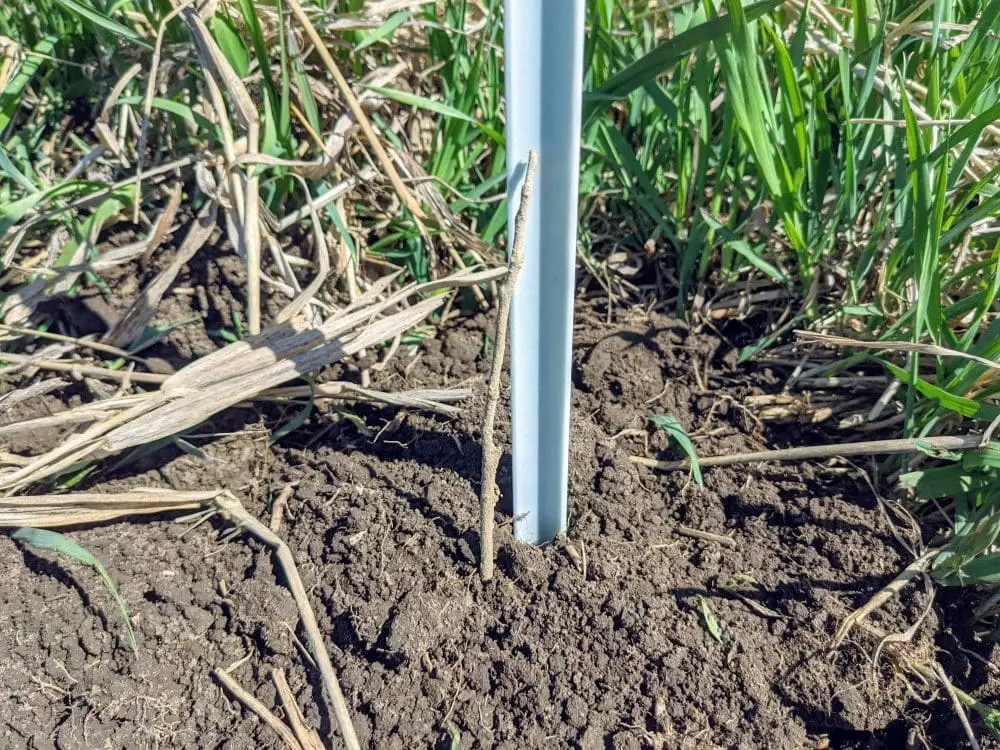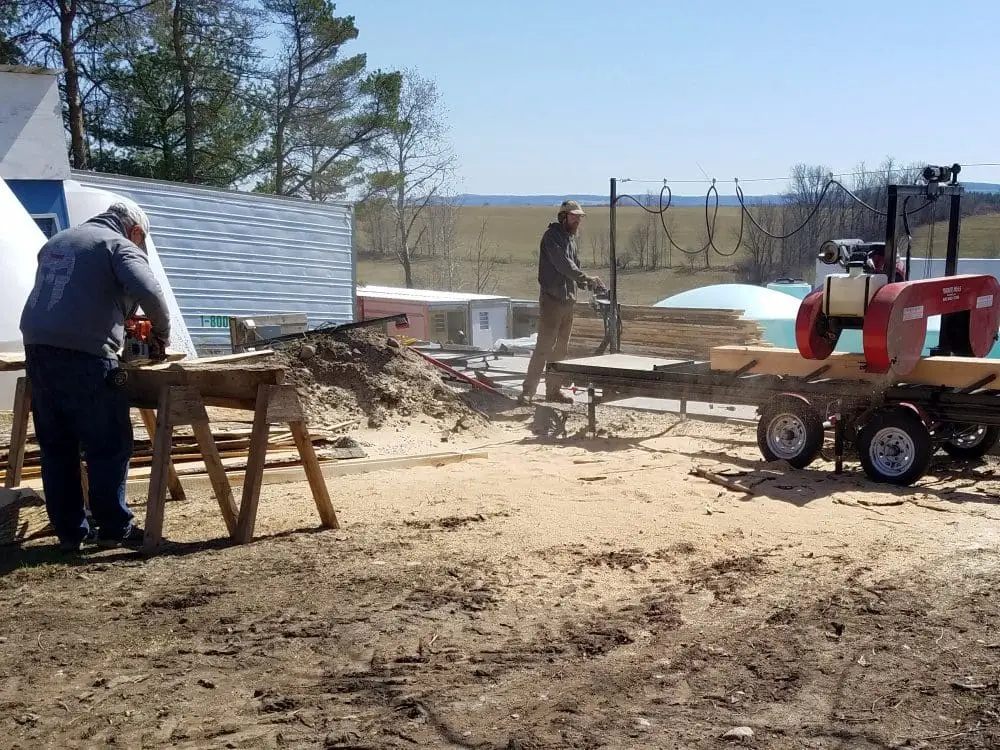I posted on the farm Instagram account a picture of the Honey Locust trees Zia and I have been planting in the pastures. Someone sent in a comment asking if the trees were for shade, and I thought, “Hey, this would be a great topic for this week’s post.” I’ll get to that question by way of detouring through the philosophy of what we’re doing on the farm.
Consider this: flying over cropland, the ground below appears like a two-dimensional checkerboard. And, for shame, plenty of people in conventional agriculture have treated it as a simple 2D exercise. X-Y coordinate marks the spot in the fields where you till, plant, fertilize, spray, spray, spray, harvest, and repeat. The coordinate right next to it gets treated the same way. By stirring up the soil the same way, planting the same seed, applying the same amount of standardized fertilizer, and spraying the same poison, one expects the same results at each point on the grid. Land, in this view, is simply the space required for production. Soil is dirt, relegated merely to the status of a growing medium. And anything else is a weed, a pest, a predator, a nuisance.
But you know us at WDF; we abjure oversimplifications. My goal is always to look for complexity, to understand the farm in a network of increasingly dynamic interactions. Each X-Y coordinate isn’t the same. There are innumerable differences as we look upward from the subsoil, the topsoil, the ground level plants, the upper canopy plants, and the trees above them.
One of the beauties of a pasture-based farm is the way we can incorporate so much vibrant life into that third dimension, from the bottom of the soil profile on up into the air above it. The soil microbes, insects, worms, plants, cattle, chickens, and all the other wild things that share this farm participate in the life of every part of this farm, but never quite in the same way in every place. Earlier this week the kids and I were outside enjoying the warm sun after supper, and we watched a red fox hunting field mice near the stream. The foxes and the mice aren’t separate from the farm; they are integral to it, part of its complexity.

So back to the Honey Locust trees and the question from Instagram. Here’s the quick list of all the reasons I want trees in my pastures:
1. Shade. As the reader guessed, on hot days cattle enjoy a shady spot. We’re focusing on getting trees into the least shady pastures first. Shade also creates micro-zones of cooler temperature, allowing different varieties of grasses to thrive in the shady places as opposed to other varieties that need full sun.
2. Wildlife habitat. The most ecologically active areas in any habitat are always at the edges, so placing trees in a meadow creates extra “edge” for plants, insects, and animals.
3. Pollinators. Many trees, including locust trees, provide food for crucial pollinators.
4. Nutrient pumping. Deep rooted trees draw minerals up from subsoil levels, increasing available minerals for the nearby plants. As a bonus, locust trees are among a small group of trees capable of capturing atmospheric nitrogen.
5. Forage. Cattle and deer enjoy eating low-hanging leaves on trees. Some trees drop fruit or nuts for additional feed for our livestock or for the wild things. Honey locusts shed sweet pods that taste a little like bananas.
6. Wood. Of course we always need wood on the farm, both for construction and for heat. Growing our own supply makes sense, even if it takes the patience of a generation for the trees to grow. Here’s a picture from Monday when Dad helped me cut some lumber on a sawmill we borrowed from a friend. We salvaged a large stack of boards from trees that blew down in last summer’s tornado.

One aspect I love about farming is that there is always a way to shake things up simply by asking, “What else can this farm be?” Adding trees to pastures and adding grass to forests has been one of those absorbing projects that allows the farm to expand within its own bounds.
